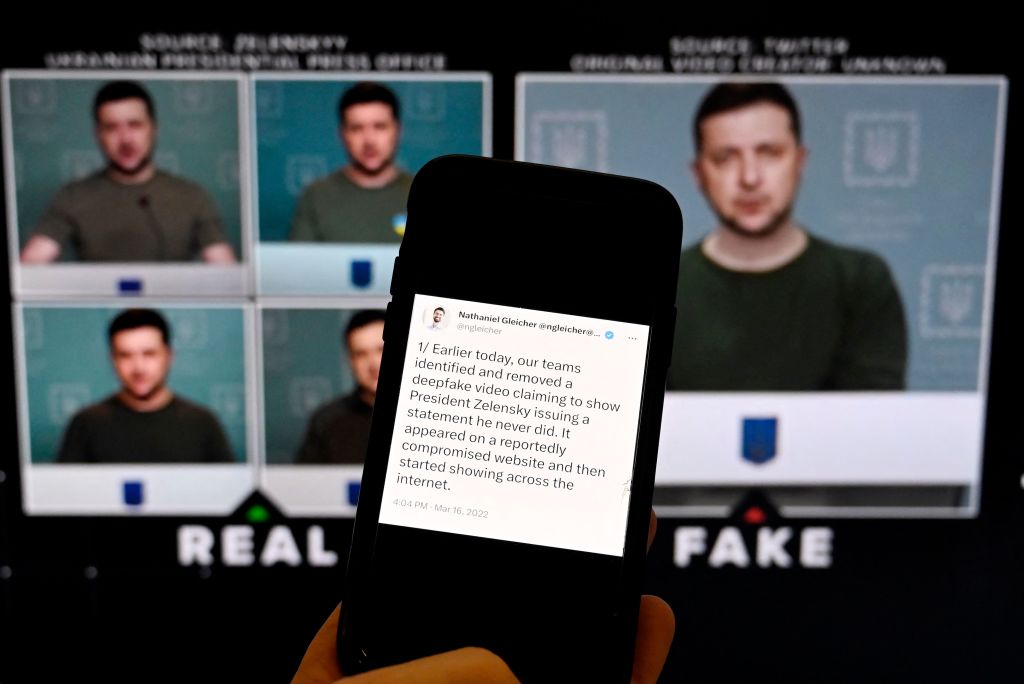To address and mitigate the disruptive and still-emerging threat posed by deepfakes, the Department of Defense’s Defense Innovation Unit is moving to rapidly deploy commercially available capabilities to identify and detect such fabricated or manipulated multimedia and online content.
Deepfake technology, broadly defined, is the application of machine learning and artificial intelligence capabilities to “face swap” people, or create synthetic audio and visual media to make people appear to say or do something different than they actually are.
Such altered material, which is said to have first appeared in 2017, continues to become more widely available, easier to use and harder to detect and is increasingly being generated and distributed online, including the production of fake pornographic videos targeting celebrities and campaigns against leading politicians.
In one relatively recent example, a highly manipulated deepfake circulated on social media appearing to show Ukrainian President Volodymyr Zelensky ordering his country’s troops to surrender in the war with Russia.
“This technology has become increasingly common and reliable and poses a significant threat to the Department of Defense, especially as U.S. adversaries use deepfakes for deception, fraud, disinformation and other malign activities,” DIU officials said at the opening of the commercial solutions competition, which closes this week.
To address this issue, the Department of Defense’s innovation hub will rapidly deploy deepfake detection and attribution solutions. The unit invites organizations that meet the detailed criteria and “desirable solution characteristics” within the CSO to apply for potential collaboration and investment.
Historically, deepfakes have been used widely against popular political candidates, especially during election years.
But that’s not DIU’s motivation for launching this special opportunity ahead of the 2024 elections.
“Deepfake analysis and detection is of increasing importance to the Department of Defense at any given time, regardless of election cycle. Deepfake detection, analysis and identification is a priority for the Department, and this is an excellent opportunity to leverage commercial solutions to assist in this critical technology area,” a DIU spokesperson told DefenseScoop.
“Most recently, the winner of the RSA Innovation Sandbox 2024 presented a voice realism solution that it plans to adapt and expand. DIU’s interest increased this year as the commercial market has reached a level of maturity that the ministry wanted to explore,” the official explained.
According to the post, all projects submitted to the CSO must comply with DIU’s responsible AI guidelines and align with an open systems architecture approach. Solution proposals will be accepted until June 27.
Notably, the Defense Advanced Research Projects Agency has been building tools since at least 2019 to quickly identify deepfakes and actually thwart large-scale, automated disinformation attacks.
So when asked if the new DIU opportunity suggests the Pentagon wants to buy such capabilities now, rather than build them itself, a spokesperson told DefenseScoop that the innovation hub is “working with DARPA and other DoD partners to prototype and integrate solutions from cutting-edge industry solution providers in complementary, yet unique ways.”
“With the maturity of the market as noted above, DIU is pleased to support the department’s mission partners in this important technology area,” they said.
Written by: Brandi Vincent Brandi Vincent is DefenseScoop’s Pentagon correspondent. She reports on emerging and disruptive technologies and related policies that impact the Department of Defense and its personnel. Prior to joining Scoop News Group, she produced feature documentaries and worked as a journalist for Nextgov, Snapchat and NBC Network. She was named a 2021 Paul Miller Washington Fellow by the National Press Foundation and received SIIA’s 2020 Jesse H. Neal Award for Best News Reporting. Brandi grew up in Louisiana and earned her Master’s in Journalism from the University of Maryland.

